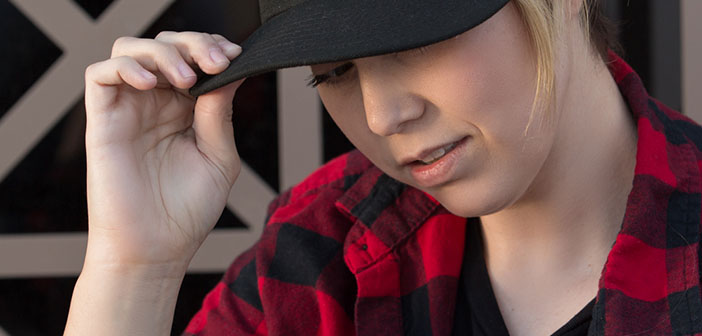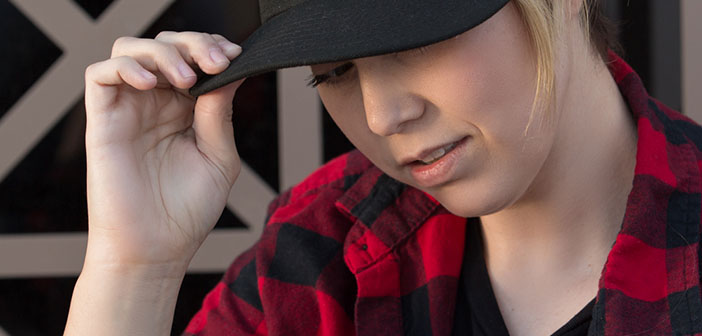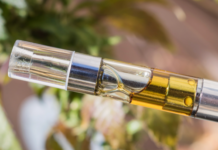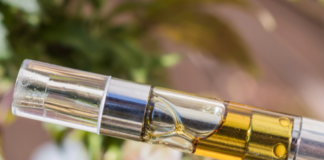
Most women experience at least some mild aches and discomfort before and during menstruation. For an unfortunate minority, period cramps go beyond an annoyance to a severity that can be debilitating, disrupting the lives of these women and leaving them sidelined from regular activities for a few days each month.
Is it possible that cannabis can kick those cramps to the curb?
To answer this question, Marijuana.com spoke to gynecologist Dr. Melanie Bone Board-certified for almost 30 years in West Palm Beach, Florida, Bone became a certified medical marijuana practitioner in 2016. She says she is passionate about “the intersection of cannabis and women’s health,” and has come to believe in the importance of the endocannabinoid system and the role all types of phytotherapies play in women’s well being.
Q: Let’s cut to the chase. Can cannabis relieve menstrual cramps?
A: If you look at the data available on using cannabis for things like menstrual cramps, there are no prospective double-blind studies — the gold standard in research. Because cannabis is still considered an illegal Schedule I controlled substance under federal law, not a lot of great studies are being done.
But here’s what we do know. Menstrual cramps are spasms of the uterine musculature that occur because the uterus is trying to expel the menstrual content, or blood. At the same time, prostaglandins — which are hormone-like substances that cause inflammation — get secreted into the pelvis. The combination of the uterine muscle contracting and the release of prostaglandins is what causes menstrual pain and cramping.
Now there have been studies done on cannabis as a therapy for multiple sclerosis. In MS, there’s spasticity, or involuntary muscle spasms. There’s a similarity between MS spasms and the uterine spasms women experience during their periods.
While these studies are not definitive, there is strong evidence in favor of using cannabis to treat MS.
What’s more, a marijuana-based mouth spray called Sativex, which contains both CBD [cannabidiol] and THC extracts, has been shown to be efficacious in treating multiple sclerosis. [Sativex is widely available in Canada, the U.K. and Europe, though not yet in the U.S.]
Looking at all this data in its entirety, it makes sense that cannabis would also help relieve menstrual cramps.
Q: When would you recommend marijuana as a treatment for period cramps?
A: In my world, as a gynecologist, you look at what we have to offer to relieve menstrual cramps. The first line of treatment would be over-the-counter pain relievers, such as ibuprofen, like Advil and Motrin, or naproxen sodium, which is sold as Aleve. If women need stronger relief, there are prescription forms of these pain relievers.
Sometimes, a woman has tried these nonsteroidal anti-inflammatory drug (NSAID) medications, both over-the-counter and prescription strength, and they don’t help. Or she might have a contraindication. If you have, for example, stomach ulcers or inflammatory bowel disease, taking any type of NSAID can really set off the condition.
In that case, a woman might end up taking an acetaminophen, such as Tylenol, which isn’t as effective in treating menstrual cramps.
We can also offer a muscle relaxer as a way to relieve uterine contractions, but often muscles in the uterine wall don’t respond.
Finally, a narcotic is another line of treatment. I have many women in my practice who need a small amount of opioids to get through their period. They’re cheap, they’re effective and, [if]used responsibly, they won’t lead to addiction.
But understandably, many women are wary of taking a narcotic.
The bottom line is when women come to me to discuss marijuana for their menstrual cramps, they’ve tried everything else that’s acceptable to them.
Q: How do you start developing a cannabis treatment plan for menstrual cramps?
A: We know that there are cannabinoids in marijuana that are not [intoxicating]. Then, there’s THC, which is psychoactive. And there are terpenes, which contribute to the entourage effect.
I wish I could say, just take the non-[intoxicating]cannabinoids and that will help your pelvic pain. But I don’t think that’s true. On the other hand, while we know high-dose THC is good for muscle spasms, I don’t believe that taking that alone will offer complete relief, either.
I think it’s the two components in tandem that have anti-inflammatory and anti-spasmodic benefits. And, of course, the entourage effect makes everything more effective.
In my opinion, when you’re dealing with issues like menstrual cramps a balanced 1-to-1 ratio of CBD-to-THC is the most helpful. Of course, everyone’s reaction to marijuana is idiosyncratic. Some women may need more non-[intoxicating]cannabinoids while others need more THC. I’d also suggest choosing a terpene profile that’s relaxing and soothing, rather than a profile that’s more energizing.
One day we’ll be able to compound cannabinoids to create personalized profiles. As a doctor, I’ll be able to say, for example, this person needs more CBN to combat inflammation. But we’re not there yet. The best option we have right now is to take a well-balanced product with full-spectrum cannabinoids.
Q: What’s the best vehicle for consuming cannabis if you want to banish cramps?
A: In Florida, smokable marijuana isn’t available for medical use and, in any case, as a doctor I want my patients to avoid smoking if they can.
One vehicle that’s very effective for period cramps or for any kind of pelvic pain is suppositories. They’re actually labeled for use as rectal suppositories but absorption through the vagina works really well. Some of my patients have had great success with this method.
Of course, other patients say they’re not going to use a suppository. For them I suggest a vaporization pen. If you take a hit with a vape pen you’ll feel the impact within three to five minutes, and you’ll get relief for the next couple of hours. You have really good control of dosage with vaping, and that’s especially important for people who have never used marijuana, or who seldom do. In contrast, it’s much more difficult to control dosage with soft gels or any kind of capsule, and that can lead to a bad experience for novice marijuana users.
It’s worth repeating that this is all very patient-dependent. For some women, a small dose of medical marijuana relieves their pain and doesn’t get them high. For other women, it has the opposite effect.
As always, with medical marijuana we start low and go slow. The endpoint is either alleviation of your symptoms, with no negative side effects, or very minimal side effects. If the patient feels high and fuzzy, I’ll increase the CBD, which is an antidote to THC. Cannabis is trial-and-error medicine.











